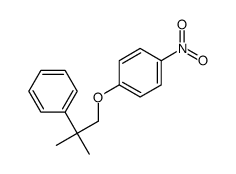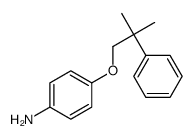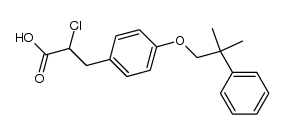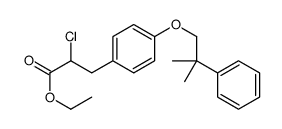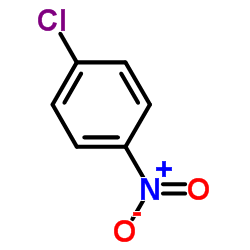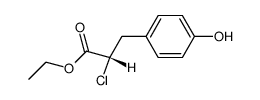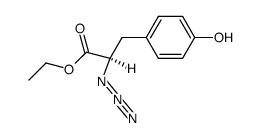23234-43-7
| Name | ethyl (2R)-2-amino-3-(4-hydroxyphenyl)propanoate,hydrochloride |
|---|---|
| Synonyms |
Ethyl D-tyrosinate HCl
Ethyl D-tyrosinate hydrochloride D-Tyrosin-aethylester,Hydrochlorid H-D-Tyr-OEt HCl D-Tyrosine, ethyl ester, hydrochloride (1:1) Ethyl D-tyrosinate hydrochloride (1:1) EINECS 245-506-4 ethyl <R>-tyrosinate hydrochloride D-Tyrosine ethyl ester hydrochloride H-D-Tyr-OEt.HCl |
| Description | H-D-Tyr-OEt.HCl is a tyrosine derivative[1]. |
|---|---|
| Related Catalog | |
| In Vitro | Amino acids and amino acid derivatives have been commercially used as ergogenic supplements. They influence the secretion of anabolic hormones, supply of fuel during exercise, mental performance during stress related tasks and prevent exercise induced muscle damage. They are recognized to be beneficial as ergogenic dietary substances[1]. |
| References |
| Boiling Point | 373.5ºC at 760 mmHg |
|---|---|
| Molecular Formula | C11H16ClNO3 |
| Molecular Weight | 245.703 |
| Flash Point | 179.7ºC |
| Exact Mass | 245.081863 |
| PSA | 72.55000 |
| LogP | 2.32740 |
| Vapour Pressure | 4.14E-06mmHg at 25°C |
Synonym: Section 2 - COMPOSITION, INFORMATION ON INGREDIENTS
Risk Phrases: None Listed. Section 3 - HAZARDS IDENTIFICATION EMERGENCY OVERVIEW
The toxicological properties of this material have not been fully investigated. Potential Health Effects Eye: No information regarding eye irritation and other potential effects was found. Skin: No information regarding skin irritation and other potential effects was found. Ingestion: The toxicological properties of this substance have not been fully investigated. Inhalation: The toxicological properties of this substance have not been fully investigated. Chronic: No information found. Section 4 - FIRST AID MEASURES Eyes: Flush eyes with plenty of water for at least 15 minutes, occasionally lifting the upper and lower eyelids. Get medical aid immediately. Skin: Get medical aid. Flush skin with plenty of water for at least 15 minutes while removing contaminated clothing and shoes. Ingestion: If victim is conscious and alert, give 2-4 cupfuls of milk or water. Never give anything by mouth to an unconscious person. Get medical aid immediately. Inhalation: Remove from exposure and move to fresh air immediately. If not breathing, give artificial respiration. If breathing is difficult, give oxygen. Get medical aid. Notes to Physician: Section 5 - FIRE FIGHTING MEASURES General Information: As in any fire, wear a self-contained breathing apparatus in pressure-demand, MSHA/NIOSH (approved or equivalent), and full protective gear. During a fire, irritating and highly toxic gases may be generated by thermal decomposition or combustion. Extinguishing Media: Use agent most appropriate to extinguish fire. Section 6 - ACCIDENTAL RELEASE MEASURES General Information: Use proper personal protective equipment as indicated in Section 8. Spills/Leaks: Clean up spills immediately, observing precautions in the Protective Equipment section. Sweep up or absorb material, then place into a suitable clean, dry, closed container for disposal. Provide ventilation. Section 7 - HANDLING and STORAGE Handling: Wash thoroughly after handling. Use with adequate ventilation. Avoid contact with eyes, skin, and clothing. Keep container tightly closed. Avoid ingestion and inhalation. Storage: Store in a tightly closed container. Store in a cool, dry, well-ventilated area away from incompatible substances. Section 8 - EXPOSURE CONTROLS, PERSONAL PROTECTION Engineering Controls: Use adequate ventilation to keep airborne concentrations low. Exposure Limits CAS# 23234-43-7: Personal Protective Equipment Eyes: Wear appropriate protective eyeglasses or chemical safety goggles as described by OSHA's eye and face protection regulations in 29 CFR 1910.133 or European Standard EN166. Skin: Wear appropriate protective gloves to prevent skin exposure. Clothing: Wear appropriate protective clothing to prevent skin exposure. Respirators: Follow the OSHA respirator regulations found in 29 CFR 1910.134 or European Standard EN 149. Use a NIOSH/MSHA or European Standard EN 149 approved respirator if exposure limits are exceeded or if irritation or other symptoms are experienced. Section 9 - PHYSICAL AND CHEMICAL PROPERTIES Physical State: Not available. Color: Not available. Odor: Not available. pH: Not available. Vapor Pressure: Not available. Viscosity: Not available. Boiling Point: Not available. Freezing/Melting Point: Not available. Autoignition Temperature: Not available. Flash Point: Not available. Explosion Limits, lower: Not available. Explosion Limits, upper: Not available. Decomposition Temperature: Solubility in water: Specific Gravity/Density: Molecular Formula: C11H15NO3.HCl Molecular Weight: 245.71 Section 10 - STABILITY AND REACTIVITY Chemical Stability: Stability unknown. Conditions to Avoid: Incompatible materials. Incompatibilities with Other Materials: Oxidizing agents. Hazardous Decomposition Products: Irritating and toxic fumes and gases. Hazardous Polymerization: Has not been reported Section 11 - TOXICOLOGICAL INFORMATION RTECS#: CAS# 23234-43-7 unlisted. LD50/LC50: Not available. Carcinogenicity: D-tyrosine ethyl ester hydrochloride - Not listed by ACGIH, IARC, or NTP. Section 12 - ECOLOGICAL INFORMATION Section 13 - DISPOSAL CONSIDERATIONS Products which are considered hazardous for supply are classified as Special Waste and the disposal of such chemicals is covered by regulations which may vary according to location. Contact a specialist disposal company or the local waste regulator for advice. Empty containers must be decontaminated before returning for recycling. Section 14 - TRANSPORT INFORMATION IATA No information available. IMO No information available. RID/ADR No information available. Section 15 - REGULATORY INFORMATION European/International Regulations European Labeling in Accordance with EC Directives Hazard Symbols: Not available. Risk Phrases: Safety Phrases: WGK (Water Danger/Protection) CAS# 23234-43-7: No information available. Canada None of the chemicals in this product are listed on the DSL/NDSL list. CAS# 23234-43-7 is not listed on Canada's Ingredient Disclosure List. US FEDERAL TSCA CAS# 23234-43-7 is not listed on the TSCA inventory. It is for research and development use only. SECTION 16 - ADDITIONAL INFORMATION N/A |
| Hazard Codes | Xi |
|---|---|
| HS Code | 2922509090 |
|
~% 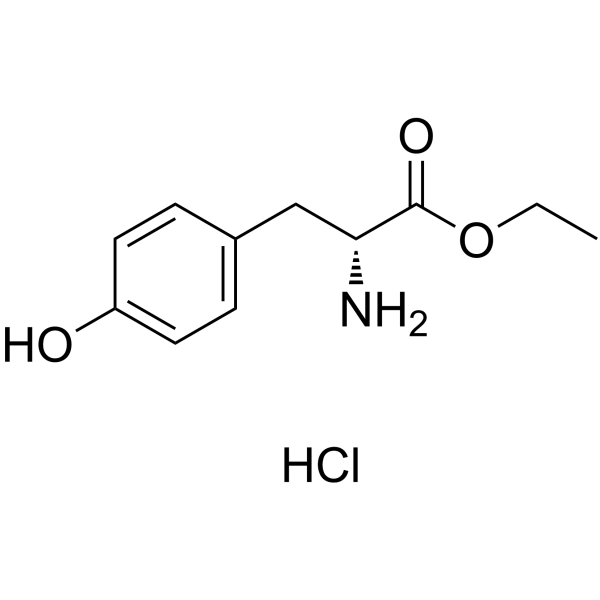
23234-43-7 |
| Literature: Arzneimittel-Forschung/Drug Research, , vol. 30, # 5 p. 751 - 758 |
|
~% 
23234-43-7 |
| Literature: Arzneimittel-Forschung/Drug Research, , vol. 30, # 5 p. 751 - 758 |
|
~% 
23234-43-7 |
| Literature: Arzneimittel-Forschung/Drug Research, , vol. 30, # 5 p. 751 - 758 |
|
~% 
23234-43-7 |
| Literature: Arzneimittel-Forschung/Drug Research, , vol. 30, # 5 p. 751 - 758 |
|
~% 
23234-43-7 |
| Literature: Arzneimittel-Forschung/Drug Research, , vol. 30, # 5 p. 751 - 758 |
|
~% 
23234-43-7 |
| Literature: Arzneimittel-Forschung/Drug Research, , vol. 30, # 5 p. 751 - 758 |
|
~% 
23234-43-7 |
| Literature: Arzneimittel-Forschung/Drug Research, , vol. 30, # 5 p. 751 - 758 |
| Precursor 7 | |
|---|---|
| DownStream 0 | |
| HS Code | 2922509090 |
|---|---|
| Summary | 2922509090. other amino-alcohol-phenols, amino-acid-phenols and other amino-compounds with oxygen function. VAT:17.0%. Tax rebate rate:13.0%. . MFN tariff:6.5%. General tariff:30.0% |


